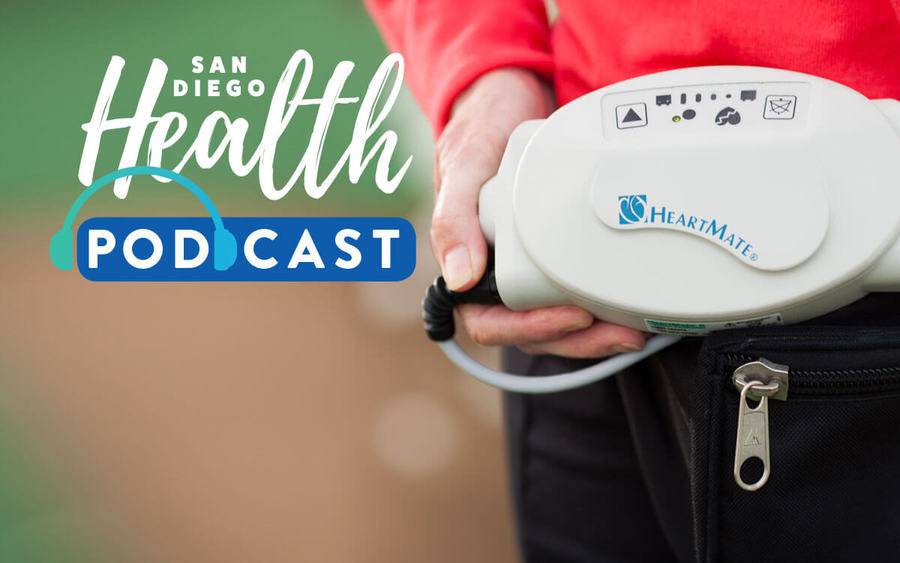LVADs, Pacemakers and How One Woman Is Thriving After a Heart Transplant (podcast)
Scripps cardiologist says heart failure is a treatable illness

Scripps cardiologist says heart failure is a treatable illness
What do you do if your heart is failing? You could try to get a transplant, but there aren’t enough donor hearts to go around and sadly many people die before they get one. But something called a left ventricular assist device (LVAD) is helping bridge the gap between heart failure and transplant. The LVAD pumps blood through the body when the heart no longer can, and can be a lifeline until a donor heart becomes available.
In this episode of San Diego Health, host Susan Taylor talks with Darla Calvet and Scripps heart failure specialist J. Thomas Heywood, MD. Calvet began experiencing congestive heart failure when she was just 39 years old. Dr. Heywood, who is also medical director of the Advanced Heart Failure and Mechanical Circulatory Support Program at Scripps Health, talks about what led to Calvet’s diagnosis and the steps taken over the years to control the condition that was causing her heart to pump abnormally.
Upon returning from a business trip, Calvet noticed swelling in her ankles. A trip to the emergency room led to the diagnosis of congestive heart failure, which causes water retention in the legs and lungs. She was first implanted with a pacemaker and prescribed medication, which helped for a time. But then her heart really began to give out. She was close to death and was placed in a medically induced coma. Doctors then implanted an LVAD, which held her over for 14 months until a donor heart became available. After undergoing a transplant, Calvet, now 54, lifts weights, cross-trains and swims. She’s also training for the Transplant Games of America. Heart failure is a treatable illness and Calvet is living proof.
Learn more about heart failure and the LVAD.